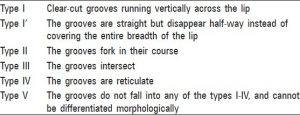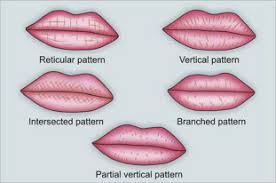Cheiloscopy is a method of personal identification based on unique print formed by ridges and furrows of lips.
Facts:
- Variations in patterns among males and females could help in sex determination.
- The patterns recover after undergoing alterations like trauma, inflammation and diseases like herpes and they do not vary with environmental factors .
- Age and smoking of cigarettes also do not change the lip print pattern.
- There can be minor changes in the lip print pattern due to some cuts, surgical marks, and genetic deformations or due to a person’s occupation like blowing musical instruments.
Importance:
In a crime scene investigation, lip prints can be used to verify the presence of a person at the scene of crime and the analysis of the lip prints left at the scene of crime and their comparison with those of suspected person may be useful for identification.
This study shows that lip prints are unique and permanent for each individual, and the lip prints among family members and between twins revealed different patterns on the whole with few similar grooves suggesting the existence of heredity in the lip prints.
Types of lips patterns:
Lip patterns are of following types based on Suzuki and Tsuchihashi classification of lip prints,



Medicolegal importance:
- Lip prints bring added evidence to a crime scene that can be valuable, especially in cases lacking other evidence, like fingerprints.
- Lip prints can be a factor in many different kinds of crimes, such as tape when a person has been bound or gagged, prints on a glass that a person drank from, prints on a cigarette butt, and prints on a glass/window if they were pressed up against it. All of these are potential places where lip prints may be found and used in the investigation of a crime.
- However, the use of lip prints in criminal cases is limited because the credibility of lip prints has not been firmly established in the court system






